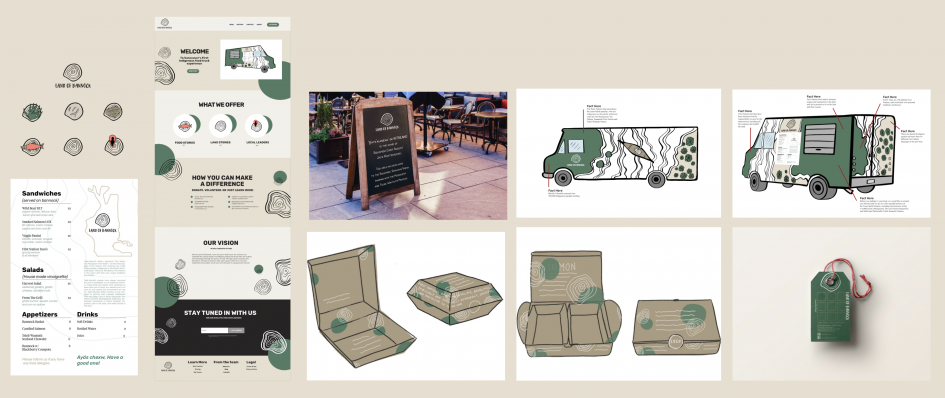We are doing a Decolonizing Idea Campaign for the City of Vancouver’s Creative City Strategy Group. Part of their mission is to increase the Musqueam, Squamish and Tsleil-Waututh’s visibility of the land. The target audience is non-aboriginal people living and visiting Vancouver. The solution will be released on June 21 (National Aboriginal Day) and length depends on solution. We also have to ensure consultation with First Nations.
As we had 4 people in the group, we initially approached the project broadly and narrow down to a topic that help us have flexible options, be executable and have a consistent design strategy.
- We first did research from the course website and split up research on the past, present land and land rituals.
- On analysis, the insight we gained was we wanted to communicate about First Nations spiritual connection with the land (rituals, ceremonies and food) because the land is so important to them both in reconciliation and in connection.
- For ideation, we then brainstormed 100 different ideas and came up with 5 campaigns (see photo).
- On review, the Pop-up Food Truck was chosen due to its executable and effective solution to increase visibility.
- We had additional refinement to our branding idea (from Breaking Bannock to Land of Bannock) and then had an excellent consultation with MOPA students.
- The MOPA students recommended:
- Change spiritual connection to educating on indigenous culture and food with land facts as there is concern tagging spirituality too much
- Share food, location and local leaders stories
- Change menu items to place names with translations
We decided on the food truck idea (Salmon and Bannock restaurant will run it) because we can use the various collateral to educate about First Nations land, food and culture. The Land of Bannock food truck increases visibility as it can appear at community centres, events and local spots. It will be an experience of the senses (see image summary).
The various collateral will share information about the land/nation(s) it is sitting on:
- general land facts
- where and how food is traditionally prepared
- local leaders
- location stories
- food stories
- nation-based menu with place names
To rate this project and my contribution to it, I would give us an 8.5. Our team worked together really well, often feeding ideas from each other! While we all contributed at each stage at the broader steps (eg. idea generation, moodboards), I worked on the copy on documents (except putting together the final case study) such as the initial presentations, creative brief and transcribing our top ideas. In design, I worked on the logo, icons and sandwich board. I also tried to touch base to get our team to meet when needed and tried to help make sure all the collateral fit together with our brief and design approach.
The consultation with the First Nations student was the most beneficial part to our learning as we had that external contact and validation of our direction. While learning about the past would make a meeting nerve-wracking, the meeting was not the case. It was fun, relaxed and informative!

Leave a Reply